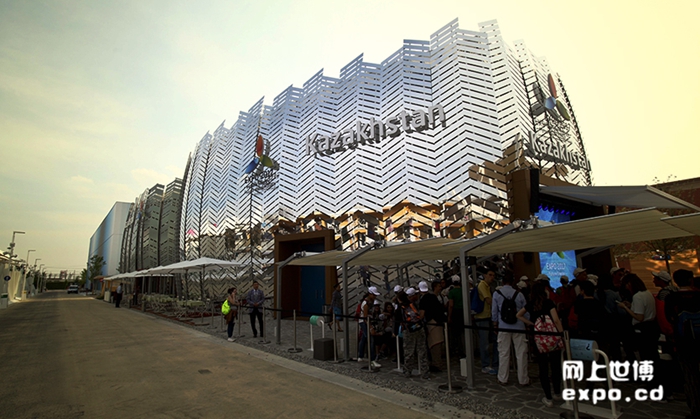The first rotunda is dedicated to the agronomy of Alexander Barayev and the results of his work. Alexander Barayev’s “no till” methods to conserve the moisture in the soil made this Kazakh scientist one of the architects of modern agriculture. The center of the rotunda features an original find: Alexander Barayev’s desk with all of his tools.
The second rotunda is devoted to livestock. Here the visitor can sample kumis, cultured mare’s milk.
The third rotunda shows the wonders of Kazakhstan, among them apples grown there which can (in some local varieties) weigh more than two pounds.
Another specialty is honey from eastern Kazakhstan, in the Altai region. The wild tulip is native to Kazakhstan. By pressing a button, the visitor can smell the fragrance of tulips, and a monitor shows a video about the tulips of Kazakhstan.
The wheel of time on the Aral Sea and the tank of sturgeons
The fourth rotunda displays the environment of the steppes of Kazakhstan, the largest dry steppes of the world. Unfortunately, this area has been the scene of an ecological disaster as the Aral Sea has shrunk. Here a wheel can be turned to show the area of the waters in various decades from 1970 to today, when the construction of a dike allowed at least a small northern part to be saved.
In the fifth rotunda, devoted to aquaculture, the main attraction is the tank of Caspian sturgeons which produce the prized caviar. Today Beluga caviar is no longer sold in order to protect the valuable Beluga sturgeon. But Kazakhstan developed a method (shown in a video) called milking that allows the extraction of the sturgeon’s eggs without killing the animal.
An interactive game to “beat” locusts
The sixth rotunda, all about the agriculture of the future, warns of the dangers posed by locusts, which threaten Kazakhstan’s agricultural yields. In 2013, swarms of locusts devastated more than 2 million hectares of cultivated land. The Balkash Lake area, covered in cane thickets, is one of the largest reproduction habitats for locusts in Central Asia. Scientists have developed a monitoring system using drones to identify the hotbeds of locust reproduction, which often are just a square mile or two in size. This avoids the need for insecticide use on a large scale. This concept is expressed through an interactive video game in which the player must exterminate the locusts without damaging the crops.
The pavilion’s showpiece is a 4D film
The real jewel of the pavilion concludes the exhibition: a room of “dynamic seats” that react to a 4D film. The film takes the audience from outer space to the Kazakh steppes in a really thrilling way.
Back on the ground level, visitors can see a model of the exposition area in Astana, already under construction, and sample Kazakh specialties in the restaurant.

